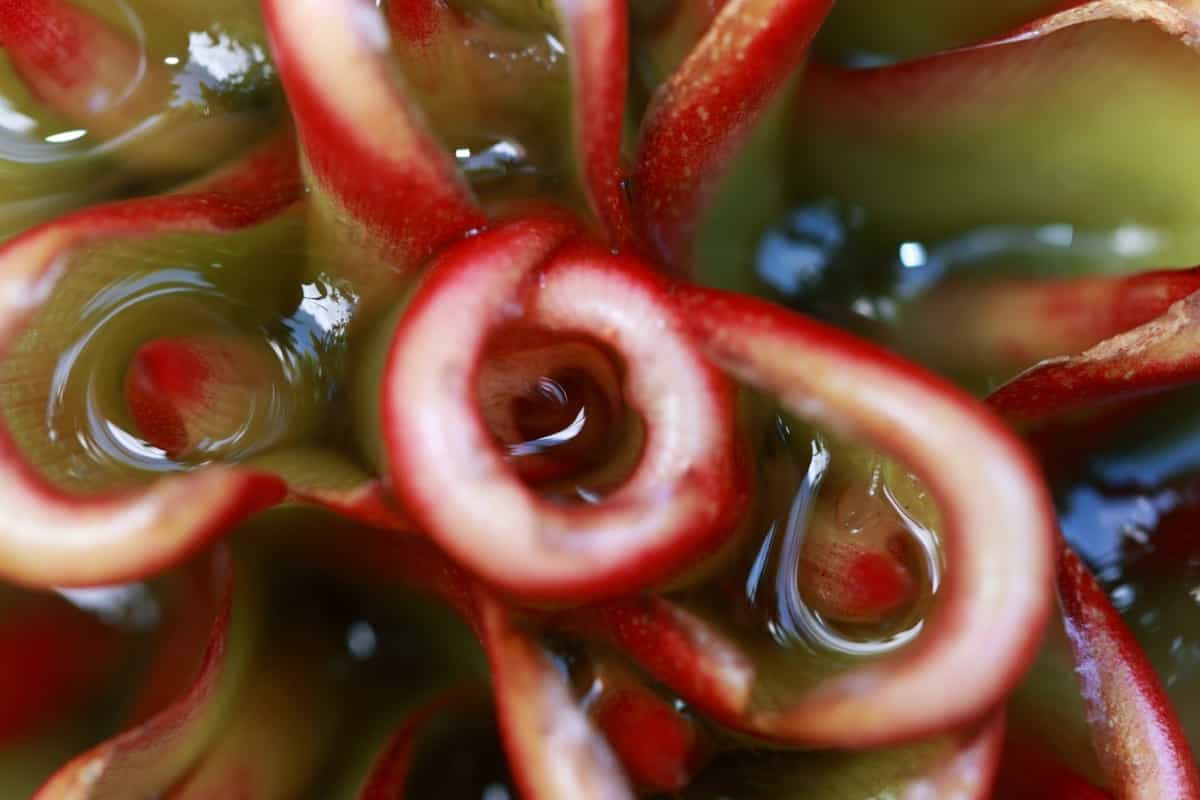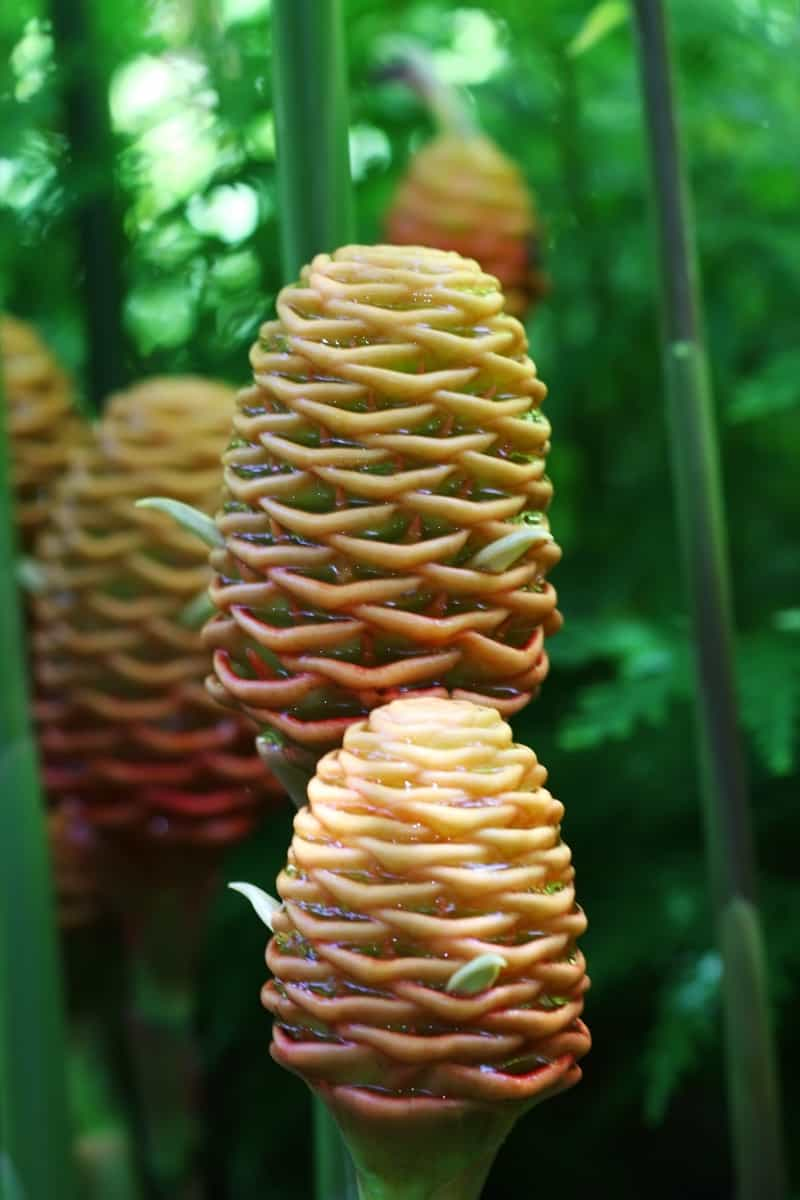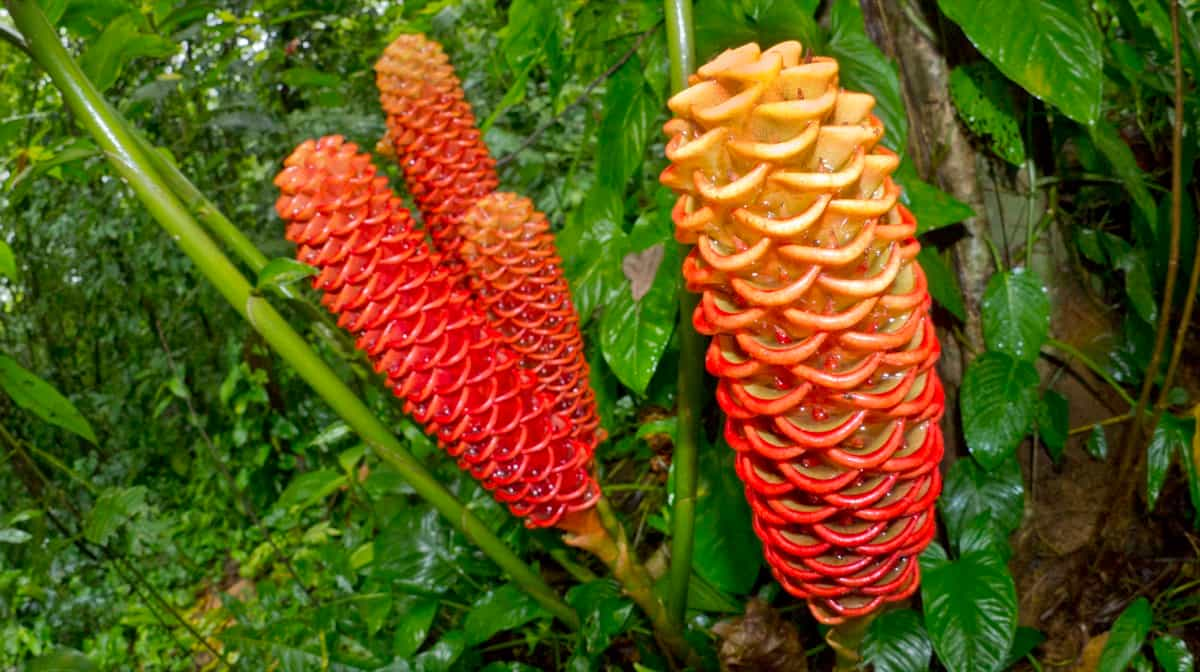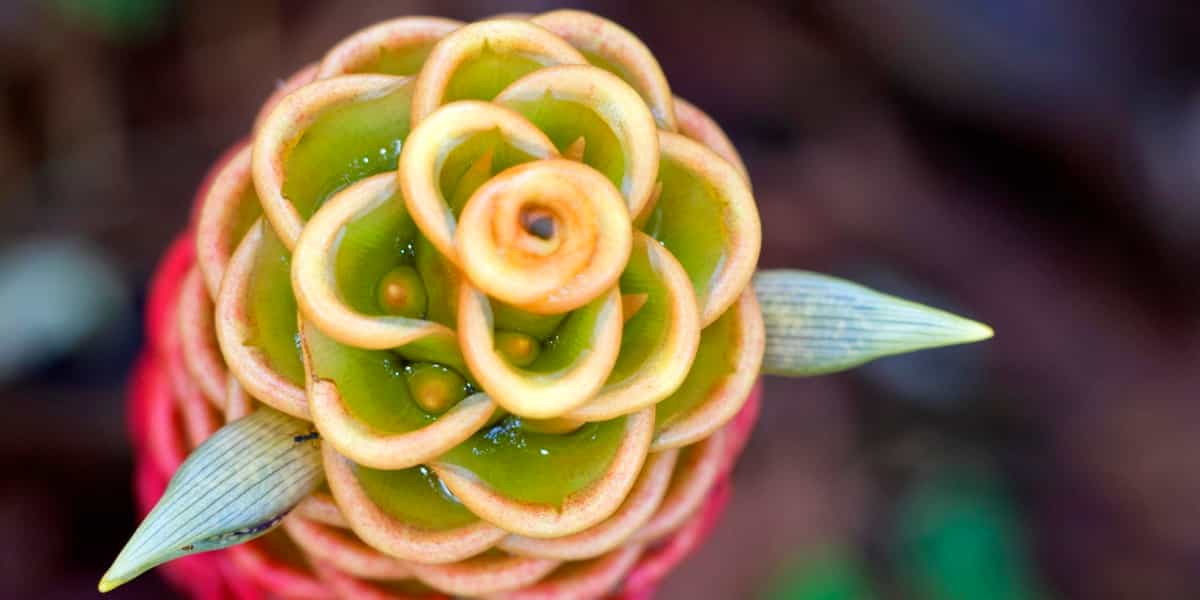The Shampoo Ginger Lily plant is a fascinating and unique addition to any garden. These tropical perennial boasts striking foliage and fragrant flowers, making it a popular choice for both ornamental and medicinal purposes. One of the standout features of Shampoo Ginger Lily is its striking flower cones.

These vibrant cones are made up of overlapping bracts that range in color from pink and red to white and yellow. The flowers themselves are small and inconspicuous but are surrounded by eye-catching bracts, making them an attractive addition to any landscape. Aside from its ornamental value, Shampoo Ginger Lily has long been used for various purposes.
How to Grow Shampoo Ginger Lily
Select the Right Location
When it comes to growing Shampoo Ginger Lilies, selecting the right location is crucial for their healthy development and abundant blooms. Before deciding on a spot for your Shampoo Ginger Lily, consider the amount of sunlight it will receive throughout the day. Ideally, they should be planted in an area that receives morning sun and afternoon shade.
In addition to light requirements, these plants also need well-draining soil that retains moisture but doesn’t become waterlogged. Avoid planting them in standing water areas, as this can lead to root rot. Another factor to consider is protection from strong winds. Shampoo Ginger Lilies have tall, slender stalks that gusty winds can easily damage.
Prepare the Soil
The success of growing Shampoo Ginger Lily depends heavily on preparing the right soil conditions. This tropical plant thrives in well-draining, fertile soil that is rich in organic matter. Before planting, it’s crucial to prepare the soil properly to ensure optimal growth and development. Start by clearing any weeds from the planting area. Shampoo Ginger Lily prefers a slightly acidic to neutral pH level, so testing and adjusting the pH, if necessary, can be beneficial.
In case you missed it: Sustainable Living: The Growing Trend of Urban Terrace Gardening in Bangalore

Loosen the soil using a garden fork, breaking up any compacted areas. This allows for better root growth and drainage, preventing waterlogged conditions that can lead to rot. Adding mulch around each plant helps retain moisture while suppressing weed growth. Organic materials like straw or wood chips work great as mulch options. Remember to water your newly prepared soil before planting so that it is moist but not saturated.
Propagating Shampoo Ginger Lily
Propagating Shampoo Ginger Lily is a rewarding and exciting process that allows you to expand your garden and share the beauty of this unique plant with others. One popular method is through rhizome division. Start by carefully digging up an established plant in early spring or late fall when it’s dormant. Gently separate the rhizomes, making sure each division has at least one healthy shoot and a portion of the root system attached.
Another method is through stem cuttings. Select a healthy stem with several nodes and remove any leaves from the bottom half. Before planting, dip the cutting end in rooting hormone powder and moist potting soil or perlite mix. Plant the cutting in a warm location with indirect sunlight and mist regularly to maintain humidity.
Plant Shampoo Ginger Lily Rhizomes
To begin, dig a hole that is about twice as wide as the rhizome itself. Make sure to space multiple rhizomes 2-3 feet apart to allow for proper growth. Place each rhizome horizontally in the hole, ensuring that any buds or growing tips are facing upward. Gently cover them with soil, leaving just a small portion above ground level. It’s important to keep the soil moist but not waterlogged during this initial stage of growth.
As your Shampoo Ginger Lily starts to establish itself, continue watering regularly, especially during dry spells or hot weather. Mulching can retain moisture and suppress weed growth around the plants. Remember to be patient. It may take several weeks for new shoots to emerge from planted rhizomes. Once they do appear, provide support for taller varieties by staking them up if needed.
Water and Moisture Management
When watering your Shampoo Ginger Lily, consistency is key. It prefers moist soil but does not like standing water or soggy conditions. To achieve this balance, it’s important to water the plant regularly but avoid overwatering. A good rule of thumb is to water when the top inch of soil feels dry to the touch. During periods of drought, you may need to increase watering frequency. However, be cautious not to drown the roots by providing too much water at once. Instead, opt for deep watering sessions where you thoroughly saturate the soil around the plant.
Mulching can also help with moisture management for Shampoo Ginger Lily plants. Apply organic mulch around the plant to retain moisture in the soil and prevent evaporation. In addition to regular watering, humidity levels play a role in maintaining optimal conditions for Shampoo Ginger Lily growth. If you live in a drier climate or have low indoor humidity, consider using a humidifier or misting spray bottle to increase moisture around your plants.
Best Fertilizers for Shampoo Ginger Lily
- Organic Compost: Start by enriching the soil with organic compost before planting your Shampoo Ginger Lily rhizomes.
- Slow-Release Fertilizer: Consider using slow-release granular fertilizers specially formulated for flowering plants like the Shampoo Ginger Lily.
- Balanced NPK Fertilizer: Look for a balanced NPK (nitrogen, phosphorus, potassium) fertilizer specifically designed for blooming plants or tropical foliage. This type of fertilizer will provide all three essential nutrients in appropriate ratios to support healthy growth and abundant flower production.
- Fish Emulsion: Another fantastic option for feeding your Shampoo Ginger Lily is fish emulsion fertilizer. Rich in nitrogen and other trace elements, this organic liquid fertilizer promotes lush foliage growth and enhances flower coloration.
In case you missed it: How to Propagate Pink Princess Philodendron: Easy Steps to Grow from Cuttings

Manage Pests and Diseases
Pests and diseases can be common issues when growing a Shampoo Ginger Lily. However, with proper management techniques, you can keep your plants healthy and thriving. One of the most common pests that affect Shampoo Ginger Lily is aphids. These insects cause damage to the leaves and flowers. Regularly check plants for any symptoms of infestation and act promptly. Another pest that may attack your Shampoo Ginger Lily is snails and slugs. These slimy creatures love to feast on tender foliage, leaving behind unsightly holes in the leaves.
To deter them, consider placing copper barriers around your plants or using organic slug pellets. Root rot can be a fungal infection that usually occurs in waterlogged soil conditions. Ensure good drainage by adding organic matter to improve soil structure. Leaf spots affect the foliage of Shampoo Ginger Lilies. It appears as brown spots on the leaves, which gradually expand over time. Remove affected leaves promptly to prevent further spread of infection.
Prune and Maintain of Shampoo Ginger Lily
Regular pruning helps to enhance new growth, maintain a manageable size, and improve air circulation around the plant. As the plant grows, you may find that it becomes too large for its designated space. If this happens, you can divide the rhizomes during springtime to create new plants or simply remove some of them to reduce overcrowding.
To maintain healthy foliage, it’s important to fertilize your Shampoo Ginger Lilies regularly. Choose a slow-release fertilizer high in nitrogen and potassium to promote lush green growth and vibrant flowers. Keep an eye out for pests such as aphids or spider mites, which can potentially infest your Shampoo Ginger Lily plants. Combat these issues with organic pest control methods like neem oil spray or insecticidal soap.
When and How to Harvest Shampoo Ginger Lily
Look out for signs that indicate maturity. The ginger lily rhizomes should be fully grown and plump. They will also change color from green to a pale yellow or cream shade. To harvest, loosen the soil using a garden fork or shovel. Once loosened, carefully lift out the rhizomes by gripping them firmly near their base.
Next, wash off any excess dirt from the rhizomes using water, but avoid scrubbing as this can damage their delicate skin. Allow them to dry before storing or processing further. For long-term storage options, choose rhizomes without blemishes or cuts, as these are more likely to keep well in a cool and dark place such as a pantry or refrigerator. Remember that harvesting Shampoo Ginger Lilies too early may result in smaller yields while waiting too long could lead to tough and fibrous rhizomes.
In case you missed it: How to Propagate Coleus: Grow from Cuttings and Leaves

Conclusion
Growing Shampoo Ginger Lilies can be a rewarding and enjoyable experience. From propagation to harvest, these beautiful plants require careful attention and care. By understanding the plant, selecting the right location, preparing the soil, and following proper techniques for propagation, watering, fertilizing, pest management, pruning, and harvesting, you can ensure successful growth.
Remember that each step is crucial in creating an optimal environment for your Shampoo Ginger Lily to thrive. With patience and dedication, you will soon be rewarded with vibrant blooms and a delightful fragrance that will enhance any garden or outdoor space.
- Feed Your Flock for Less: Top 10 Tips to Save on Chicken Feed
- Ultimate Guide to Ossabaw Island Hog: Breeding, Raising, Diet, and Care
- Hatching Answers: The Top 10 Reasons Your Chickens Aren’t Laying Eggs
- Eggs and Economics: Breaking Down the Cost of Raising Backyard Chickens
- Defend Your Greens: Proven Methods to Keep Iguanas Out of Your Garden
- Ultimate Guide to Cinnamon Queen Chicken: A Comprehensive Guide for Beginners
- Ultimate Guide to California Tan Chicken: Breeding, Raising, Diet, Egg-Production and Care
- Ultimate Guide to Marsh Daisy Chicken: Breeding, Raising, Diet, and Care
- 10 Types of Chicken Farming Businesses You Can Start for Profits